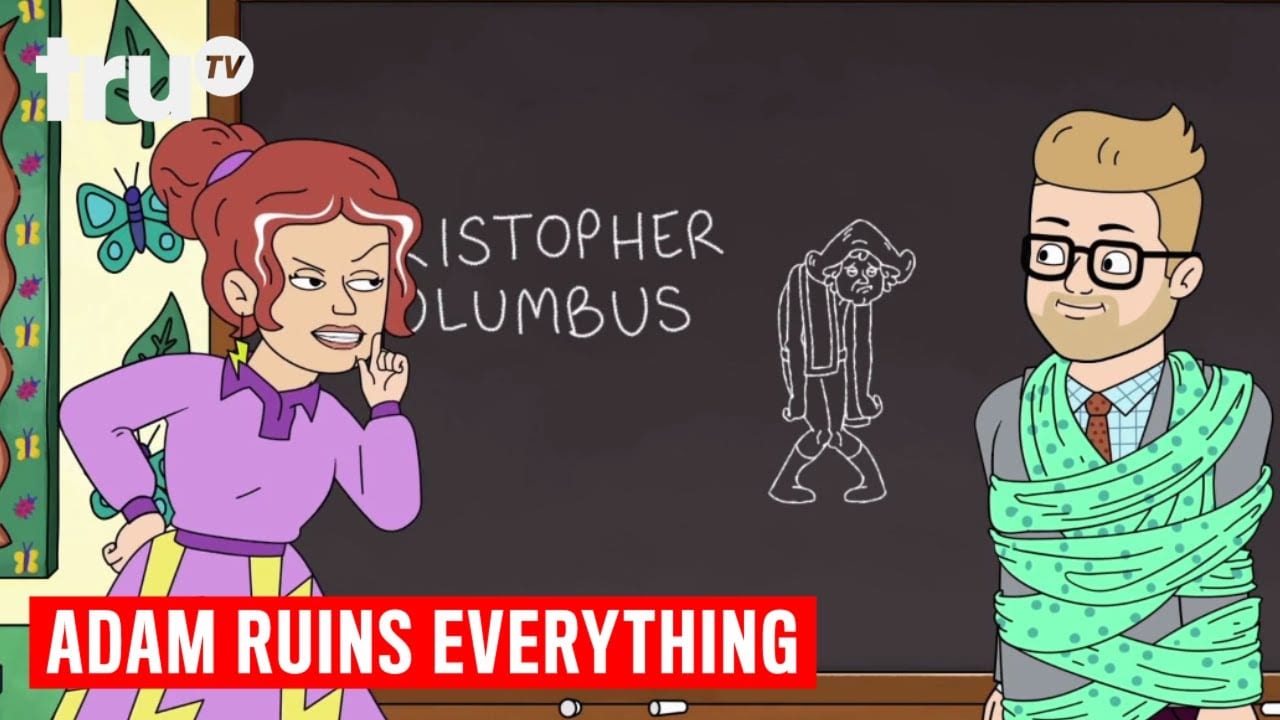Columbus Day is a national holiday in many American states, Spain and Italy commemorating the arrival of Christopher Columbus to the Americas on 12th of oct 1492.
This year, the government of California announced to change the name of the holiday to Indigenous Day by means of making amends with the native people that once inhabited the land, exploited by European newcomers. Archives and current research show that many stories surrounding the historical figure of Columbus have changed over the course of time, leaving out details referring to his arrival and dealings with aboriginal people in the 15th century.
This video by American comedian Adam Conover sums up these mis-presentations in a very precise and satirical manner:
Adding to the above, the geographical location Columbus arrived to on 12th of oct 1492 were the Bahamas, an island group in the Carribean. Taíno people were the aboriginals inhabiting many of Caribbean islands at the time and were the first to encounter European settlers. Columbus established the first American colony at La Isabela, on the north coast of Hispaniola, in 1494.
So what happened to the Taino Tribe?
After a brief period of coexistence, relations between the newcomers and natives deteriorated. Spaniards removed men from villages to work in gold mines and colonial plantations. This kept the Taíno from planting the crops that had fed them for centuries. They began to starve, many thousands fell prey to smallpox, measles and other European diseases for which they had no immunity, some committed suicide to avoid subjugation, hundreds fell in fighting with the Spaniards, while untold numbers fled to remote regions beyond colonial control.
In time, many Taíno women married conquistadors, combining the genes of the New World and Old World. By 1514, barely two decades after the first contact, an official survey showed that 40 percent of Spanish men had taken indigenous wives. Within those 30 years the population of Taino declined between 80% and 90% and with the population, so did the languages and customs.
Given the dramatic collapse of the indigenous society, and the emergence of a population blending Spanish, Indian and African attributes, one might be tempted to declare the Taíno extinct. However, there are many alive today who do identify themselves as indigenous, notably among the islands of Puerto Rico and the Dominican Republic.
In a 2010 survey, for example, 19,839 Puerto Ricans checked the identity box marked “American Indian”, an increase of almost 49% compared to the similar study performed in 2000. This headcount would lead one to think it is to do with a somewhat activist endeavour of people who refuse to identify themselves as American or Hispanic and therefore prefer identifying themselves as indigenous.
Anthropologist Robert M. Poole performed a year-long research into the validity of these claims in an attempt to establish if there are people in the Caribbean with indigenous ancestry that also still perform similar customs and rituals as the Taíno back in the 15th century. Pooles’ research took him to Cuba, where he met with villagers from Baracoa who had the same high cheekbones as the ones described by Christopher Columbus in 1492. They kept the old traditions, planting their dense gardens, praying to the moon and sun for strength, gathering wild plants for healing and marking the passage of time without clocks or watches. 70-year old leader Francisco Ramirez Rojas tells him:
“This tree is a relative. It has feelings like we do, so it should be treated with respect. If you make tea from the bark of this tree, it has a lot of power. It’s good for colds and respiratory problems. But if you don’t ask permission before you cut the bark, it may not work. So I always say a little prayer so the tree knows I’m serious and I want to share its power. ‘Give me your strength for healing.’ That’s what I ask.”
The chronicles that Ramirez told Poole are eerily similar to the ones written down by Spanish chroniclers but it is impossible for Ramirez to have read them, he is illiterate, so the stories must have been passed down to him from generation upon generation.
Want to know more about Pooles’ research? Read an article in The Smithsonian.

